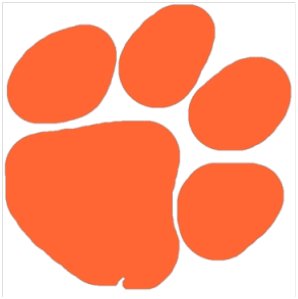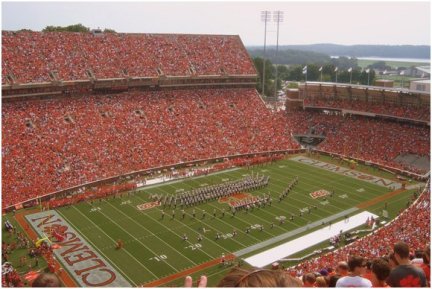A Second, Deeper Look
|
As these things go, response to the November 22 BookThinker was fairly brisk. When I was writing it - specifically, the article on "critical mass" bookselling - a small voice
said, "Maybe you shouldn't use yearbooks as an example without elaborating on it." Based on some of the feedback I received, it appears as though that voice was right.
Several readers pointed to poor sales of yearbooks, also to poor outcomes when sales did happen. Some had stopped selling them altogether. But here's the thing: Like any other niche
I can think of, not all yearbooks are good candidates for resale. I buy and sell lots of them, sure, but I leave lots of them on the table too. I could list specific examples of
some that do well - in fact, I did so in issue #31 of the Gold Edition, co-authored with yearbook guru Seth Poppel - but I think it would be more useful to dig deeper: Why do some
yearbooks sell for prices worth bothering with and some not? And let's leave the painfully obvious celebrity yearbooks out of this.
First and foremost, schools are communities, and like any community, bonding strength to it and the people who live in it varies considerably. The reasons themselves vary.
Example (out of a hat): Clemson is presently the number one ranked football team in the nation. Clemson does not have what I would call a storied football program, but nor has it
been insignificant. From Wikipedia: "the program has achieved a Consensus Division I Football National Championship, 5 undefeated seasons including 3 perfect seasons, 20
conference championships, 4 divisional titles since 2005, and has produced 91 All-Americans, 17 Academic All-Americans, and 194 NFL players. Clemson has had six members inducted
into the College Football Hall of Fame, including former players Banks McFadden, Terry Kinard, Jeff Davis, and former coaches John Heisman, Jess Neely, and Frank Howard." And,
yes, John Heisman is the Heisman Trophy dude you're thinking of.
Have you ever been to Clemson, South Carolina? I have. It's a small town, maybe 13,000 or 14,000 people, and yet Clemson University has about twice that many students enrolled
at any given time, so it feels bigger than a census would indicate. During football season especially it feels big, and you see this tiger paw just about everywhere you look:
And Clemson Memorial Stadium? A capacity of over 80,000 - only 12,000 or so tickets are distributed to students each game - and it's a rare game that isn't a sellout. If you do the math, it's
clear that current students aren't what primarily pack this stadium. One other thing is also clear:
Virtually everything is orange at a home game, and if this crazy football phenomenon isn't bonding on a massive scale, I don't what is. Students, faculty, alumni, locals, etc. - all
live and breathe football come September, and many travel from hundreds of miles away to get there. Programs, souvenirs, T-shirts - and on and on - are robust sellers. Oh - and I grab
Taps's whenever I come across them. The yearbook, in case you don't know.
Funny thing about this yearbook, I don't have any copies in inventory at the time of this writing. They have sold, one and all, easily a total of more than a dozen copies since I've
been in this game. And typically to the tune of $40 to $60 each, early years for much more. If you have access to one or more historical pricing tools, you can dig up more than a few copies
that have sold for $5, $10, $20, etc., in recent years. But critical mass booksellers don't price them low; they price them up - and wait. They know they will sell. They know about the
orange bond.
Of course, there are many other colleges and universities that have established strong bonds in their respective communities, and their football programs often play a key role. And some
of these programs are considerably more storied than Clemson's - and even higher prices can be achieved. And, by the way, I can't recall the last time I bought a community college
or teacher's college yearbook. Most of them don't even field teams. Spots. Pick them.
But reasons why some yearbooks do well aren't always so obvious. The high school I went to was in a leafy, some would say privileged, Chicago suburb consisting mostly of white collar
families - for that matter, almost entirely white families period - and the expectation was that just about everybody who graduated would go on to college. And most everybody would
delay getting married, understandably. But there were plenty of blue collar communities in the Chicago area as well, many of which didn't produce a high percentage of college graduates.
Lots of these kids just went to work after high school. And marriages out of high school were far more common - usually the high school sweetheart type.
A question for you: Which type of high school do you think would be more likely to produce a strong bond? Sell for a better price?
I'll go on. One of the reasons people buy yearbooks in later years is to acquire a replacement copy for one that's been damaged, lost, etc. Sometimes it's to purchase one for the first
time because there wasn't money to burn when it was published. Timing is an important factor here. Perhaps it's a 10-year reunion coming up, and one wants to refresh one's memory of classmates.
Perhaps it's a 25-year reunion. Or a 50. Of the three, which do you think would command a premium? And what does this translate into? Yes, there's a sweet spot now for ca. 1960's high school
yearbooks. Price them up. And wait.
Speaking of Chicago, I recently purchased several ca. 1930's yearbooks from a Chicago high school - one of the first to be fully integrated. They are striking historical documents. As
I paged through them, I got an almost palpable feel - tension? - for how it must have been for whites and blacks to go to school together then. Example: Based on a sampling of a dozen or
so pages of senior photos, I would estimate that blacks made up about 20% to 25% of the student body; however, black representation in clubs and organizations was stunningly minimal. One
here. Pages later, one there. The faculty and administration? 100% white. Ponder the possibilities for pricing things like this up - provided your descriptions detail why they are to
collectors. And waiting.
Shall I continue? How about something that didn't turn out so well but illustrates something important about bookselling?
Did you know that the Iowa State University yearbook is called The Bomb? Did you also know that, during World War II, a group of scientists working at the university played a critical,
then secret role in the Manhattan Project? Theirs was called the Ames Project, and they were assigned the task of developing a method for the production of pure uranium metal in large
quantities (which was available only in small quantities at the time) and a procedure for large-scale casting of the metal. Their success in achieving both was instrumental in the ultimate
outcome of the War. Well, yours truly picked up a 1946 Iowa State yearbook several years ago and thought to himself, "I think I might have something here." This was the first yearbook
published after the bomb was dropped, so I guessed there would be some mention of it, and a potential to cash in.
Not.
It gets worse. Turns out the first Bomb was published in 1893, and the following was the explanation for it in the 1895 yearbook: "The first thought that comes to mind at the mention
of the name "Bomb" is that of an instrument of war, exploding and causing destruction amongst enemies. But a bomb is occasionally put to a much pleasanter use than that of an engine of
destruction. One form is used as a means of conveying messages to distant friends. Our Bomb agrees with such a definition also. Its mission is to awaken pleasant reminiscences in the minds
of the alumni, and to convey to them information regarding all their brother graduates." Right. All I was left with was irony and a $$, not $$$ yearbook.
But things weren't always so dull in Ames, Iowa. In 1948 noted Playboy illustrator Alberto Vargas' illustration of the Homecoming Queen appeared in the same yearbook.
If I make no other point here, let it be this: One of the most important disciplines you can develop as a bookseller is to always, always look for things that will build value into what
you're selling. And never assume that just because some clown like me mentions that he makes money selling yearbooks this means that all yearbooks will sell for amounts that matter, nor that
they will always sell themselves.
Pick your spots. Build value. Cash in.


Copyright 2003-2015 by BookThink LLC